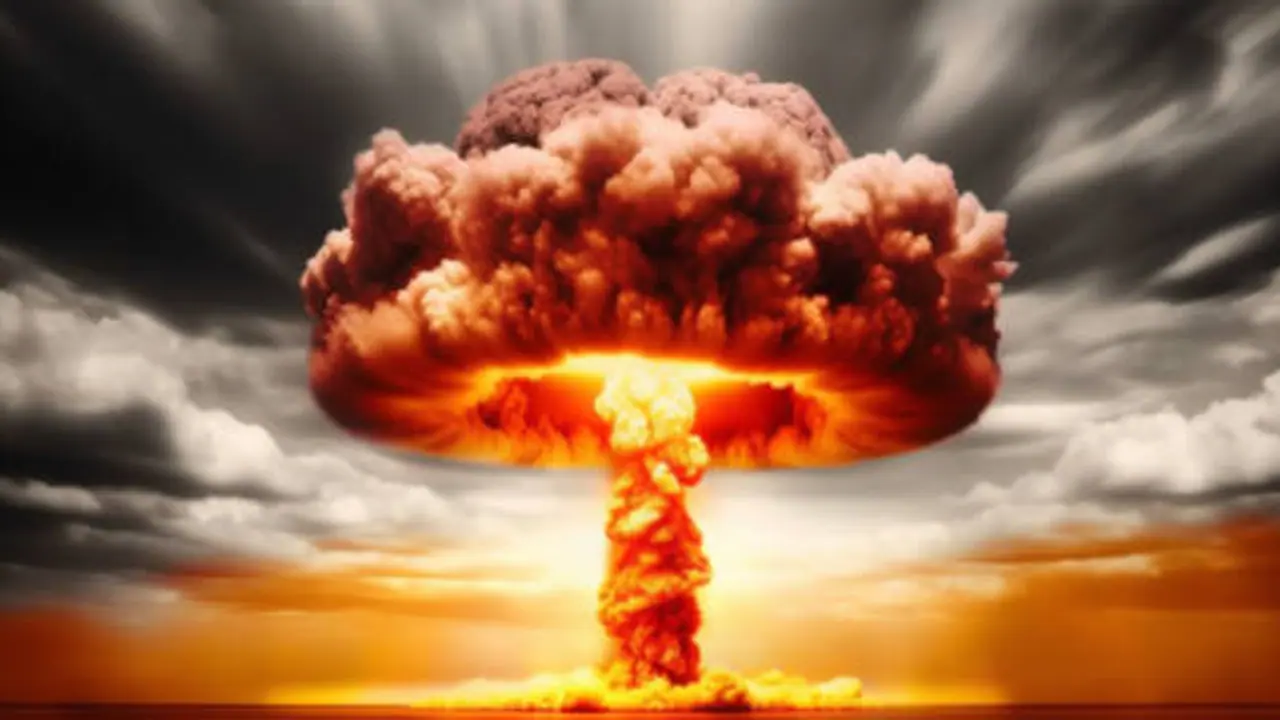The US has accelerated production of its B61-13 nuclear bomb, 24 times stronger than the Hiroshima bomb, amid rising tensions with China and Russia, aiming to modernize its deterrent capabilities and reinforce strategic dominance.
In a move that underscores rising global tensions, the United States has dramatically accelerated the development of its newest nuclear weapon, the B61-13, a gravity bomb that boasts a yield 24 times more powerful than the atomic bomb dropped on Hiroshima in 1945.

Originally scheduled for production in 2026, the B61-13 is now being rushed into manufacturing seven months ahead of schedule, with the first units potentially ready by late 2025. Scientists at Sandia National Laboratories in New Mexico, in collaboration with the Department of Energy and the US Air Force, are leading the project. The expedited timeline cuts the total production time by 25%, according to officials.
Also read: World's first: How 10 cyborg cockroaches joined earthquake rescue efforts in Myanmar (WATCH)
What is the B61-13?
The B61-13 is a nuclear gravity bomb—meaning it is dropped from an aircraft and relies on gravity to reach its target. It is the latest iteration in the long-running B61 series, combining the high-yield warhead from the Cold War-era B61-7 with modern upgrades introduced in the B61-12, including precision-guidance systems and enhanced safety features.
With an estimated yield of 360 kilotons, the B61-13 dwarfs "Little Boy," the 15-kiloton bomb dropped on Hiroshima, by sheer destructive power. It is designed to destroy large-area or hardened military targets, giving the President and Pentagon more tactical options without increasing the overall size of the US nuclear arsenal.
Why the rush?
US officials have cited a “critical challenge and urgent need” to modernize America’s nuclear deterrent in the face of growing threats from China, Russia, and other nuclear-armed nations. The move follows escalating military and economic tensions, as well as a noticeable uptick in nuclear activities by adversaries.
In 2023, concerns that Russia’s invasion of Ukraine could spiral into a wider conflict prompted the Biden administration to greenlight plans for the B61-13. Now, under President Donald Trump’s administration, the project has been fast-tracked amid new warnings from China, which recently responded to US tariff threats by saying it was “ready for any type of war.”
Also read: Titanic's last hours revealed in most detailed scan yet
Where will it be deployed?
The B61-13 is expected to be deployed aboard the B-21 Raider, America’s newest stealth bomber currently under development. It may also complement existing aircraft like the B-2 Spirit, though it is not yet certified for use on fighters like the F-15 or F-35, which carry the smaller-yield B61-12.
The destructive potential
If detonated over a major city like Beijing, estimates suggest the B61-13 could result in over 788,000 deaths and 2.2 million injuries. Within half a mile of the blast, the heat would vaporize everything, and buildings would be flattened for miles around. Survivors up to two miles away would face lethal radiation exposure, while long-term effects could include widespread cancers and ecological devastation.
A shifting global nuclear landscape
The US currently maintains a nuclear arsenal of around 5,044 warheads, second only to Russia. However, countries like China, India, Pakistan, North Korea, and Israel have expanded their stockpiles in recent decades. Meanwhile, key arms control treaties have stalled or been abandoned, and both Russia and China have reportedly begun expanding their nuclear test facilities.
In February 2025, the US also announced plans to restart underground nuclear testing, further raising concerns about a new arms race.
Also read: Jaw-dropping! Scientists find stellar cloud that contains 400 quintillion liters of alcohol
As the world inches closer to a potential era of renewed great-power conflict, the B61-13 represents both a technological leap and a chilling reminder of nuclear warfare’s destructive potential. While US officials emphasize that this modernization effort doesn’t increase the country’s stockpile, the fact that newer and more powerful bombs are being readied for possible use has sparked fresh debates over deterrence, escalation, and the future of global security.
